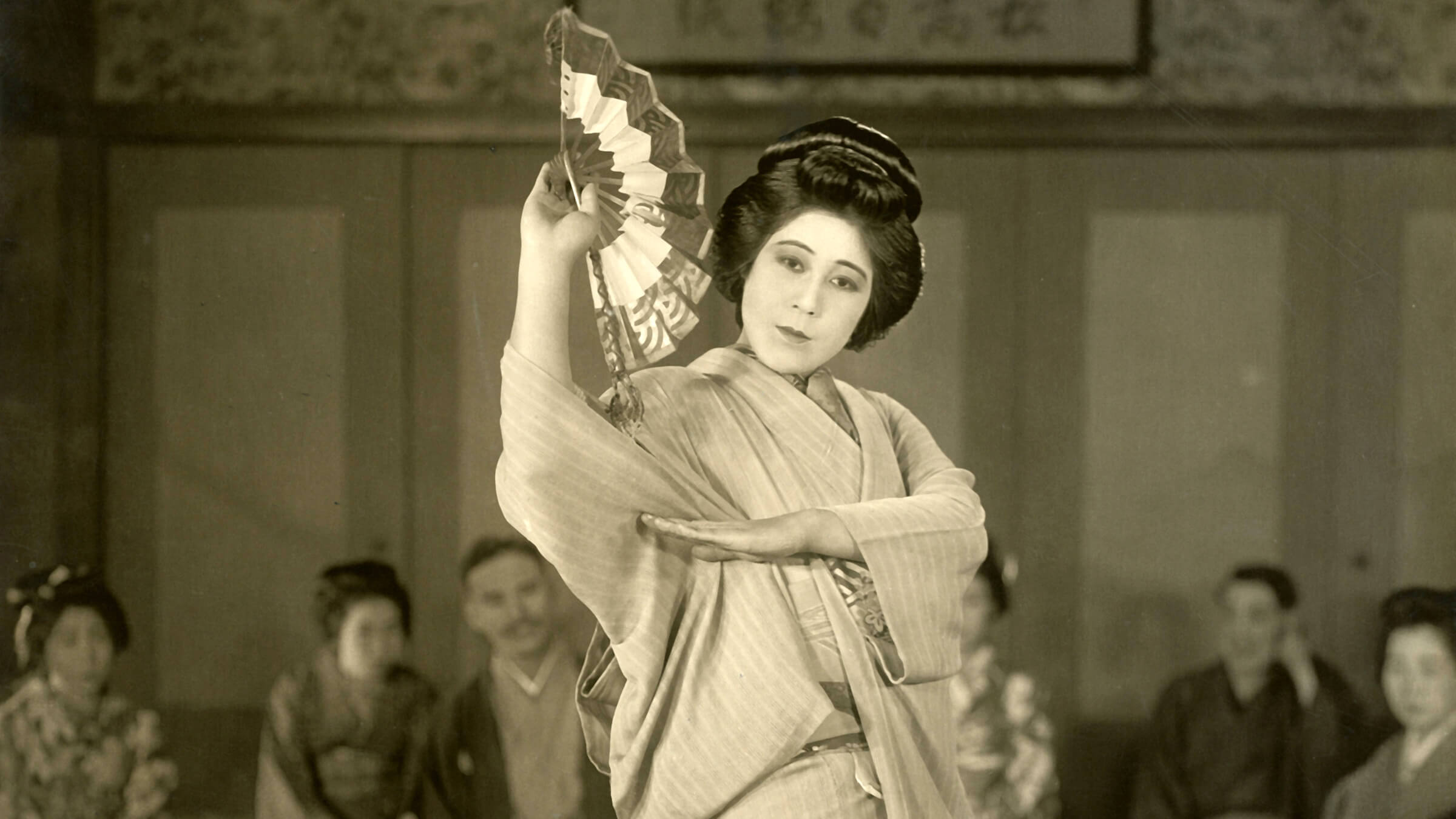Published in conjunction with the screening of The Dragon Painter at SFSFF 2023
Her career often overshadowed by her husband’s, Tsuru Aoki has a legacy of her own as one of the first Japanese actresses on film and the first to become a star. She comes from a rich acting pedigree: her uncle, Otojiro Kawakami, owned Japan’s Imperial Theatre and sought to reform Kabuki traditions by depicting the ordinary lives of the Japanese and incorporating Western plays as well as women performers, who had been banned from all stages from 1629 until 1891.
Aoki’s aunt by marriage was the famous former geisha Sadayakko (née Sada Koyama), whose virginity had been preserved for Japan’s Prime Minister Hirobumi Ito. She later became the first woman to perform on the modern Japanese stage as part of her husband Otojiro Kawakami’s troupe, and together they toured the world, their performances drawn from both Japanese and Western texts.
Kawakami and Sadayakko arrived in France just as Japonisme was spreading across Europe—evident in the Belle Époque’s embrace of Japanese artforms and the popularity of Japanese-themed opera productions like The Mikado. To their Paris stage shows Kawakami and Sadayakko added a “geisha act of dying dance” and a “hara-kiri” performance to cater to local expectations.
Billed as Madame Sada Yacco, Sadayakko became a sensation in France. Parisian women donned “Yacco style” dresses, Guerlain sold Yacco perfume, and Picasso portrayed her in a series of sketches. She also was the face of a line of cosmetics based on the tones of Kabuki makeup.
As a young child Tsuru Aoki accompanied Kawakami and Sadayakko on their U.S. tour, the first Japanese acting troupe to do so. Harper’s Bazaar put Sadayakko on its December 1900 cover and wrote approvingly that “she has been playing to large and enthusiastic audiences of society men and women.”
Tsuru remained in San Francisco after the tour as the adopted daughter of set designer and painter Toshio Aoki, taking his name. He had relocated from Yokohama in 1880 and by the early 1890s he had his own business, which expanded to include a second studio in Southern California. After he died in 1912, Tsuru was cared for by Louise Scher, a journalist for the L.A. Examiner.
All grown, Aoki was one of the leading performers at the Japanese Theatre in Los Angeles and began appearing on film in 1913, in comedies by Fred Mace and in the Majestic film, The Oath of O’Tsuru San, which caught the eye of producer Thomas Ince looking to contract Japanese players for a series of films that would appeal to the new fashion for the “East,” in particular Japan.
In 1914 Aoki starred as the heroine in The Wrath of the Gods, Ince’s feature about the eruption of the Sakurajima volcano, which he publicized by falsely claiming that Aoki’s home had been destroyed and her family dead in the disaster. The film was so successful that Ince signed Aoki and twelve of her fellow actors, including Sessue Hayakawa, at a time when white actors were usually cast in the Asian roles of American films. Aoki appeared in shorts and features at Ince, playing mostly characters of Japanese origin but also Chinese, Indian, and Native American. She garnered publicity in the trade publications of the day, even appearing on several covers.
By the time Aoki and Hayakawa’s Ince contracts expired in late 1914, they were a married couple. After Hayakawa’s star-making turn in The Cheat, Aoki and Hayakawa were under contract to the Jesse Lasky studio, appearing in six films together, including The Honorable Friend, Alien Souls, The Call of the East, and The Bravest Way, with her now mostly in supporting roles.
Aoki was no doubt integral to the formation of Hayakawa’s move to independent production, with an eye for improving the roles they both got to play. In addition to her portrayal of Umé-ko in The Dragon Painter she costarred in seven American-made independent features alongside Hayakawa. Her stardom, which embodied Western perceptions of an exoticized East, is believed to have in turn shaped the persona of Japan’s first female movie star, Sumiko Kurishima, popular in the 1920s as “a typical traditional Japanese beauty.”
In 1920 Aoki signed a three-picture deal with Universal and starred in The Breath of the Gods, based on another novel by the author of The Dragon Painter. She also supervised set design for the film. Her other Universal pictures were Tokio Siren, about a Japanese woman brought to America so she could avoid marrying someone she didn’t love; and Locked Lips, about a woman living in Hawaii who discovers a shipwrecked white man and nurses him back to health.
Life became untenable for the Hayakawas in California with the continual stripping away of the civil rights of Japanese Americans. The couple decamped first for New York then England and France, appearing in a handful of films along the way, including 1924’s La Bataille. The French revered Hayakawa since his appearance in The Cheat but also fondly remembered Aoki’s aunt, Sadayakko. The Hayakawas eventually resettled in Japan, but she had already retired from the screen to raise their three children. In 1960, Tsuru made her final screen appearance alongside Sessue in Hollywood’s Hell to Eternity, after an absence of thirty-six years.
Based on the research of Daisuke Miyao, Sara Ross, and Lesley Downer

